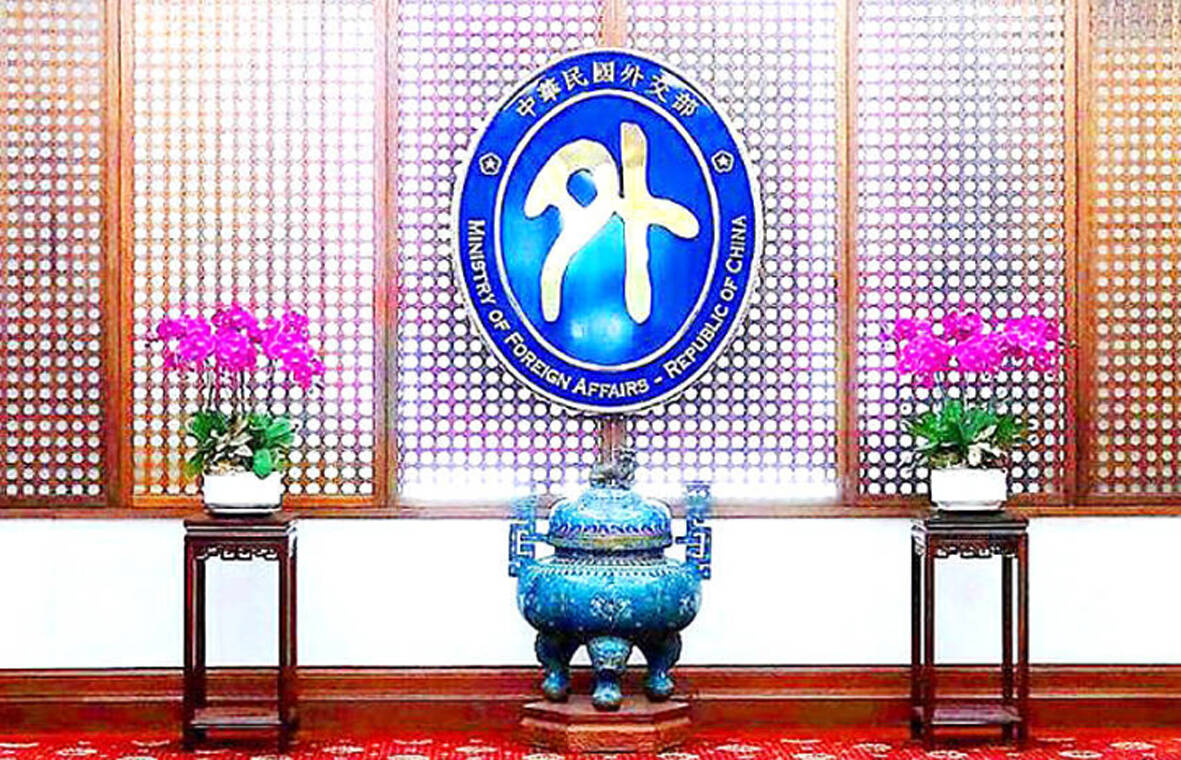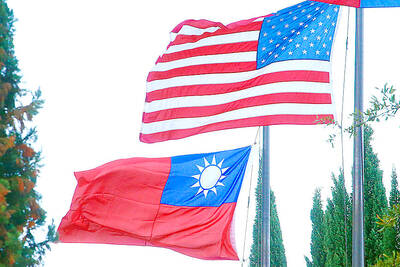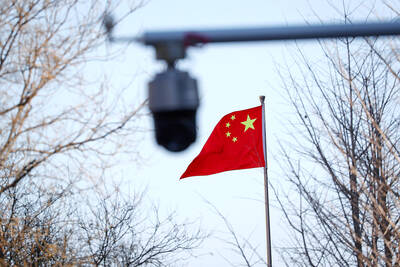The Ministry of Foreign Affairs (MOFA) yesterday expressed gratitude toward the US for reiterating its support for cross-strait peace following a round of high-level talks between US National Security Adviser Jake Sullivan and Chinese Minister of Foreign Affairs Wang Yi (王毅) held over the weekend.
Washington and Beijing late on Saturday separately announced that Sullivan and Wang, who is also a Chinese Communist Party Politburo member and director of the Office of the Foreign Affairs Commission of the Chinese Communist Party Central Committee, met in Bangkok on Friday and Saturday.
Both sides said the round of talks was meant to follow up on the San Francisco summit of US President Joe Biden and Chinese President Xi Jinping (習近平) in November last year that included issues related to Russia’s war against Ukraine, the Middle East, North Korea, the South China Sea and Myanmar.

Photo: Yang Cheng-yu, Taipei Times
The talks were part of an effort “to maintain open lines of communication and responsibly manage competition in the relationship as directed by the leaders,” the White House said in its statement.
Sullivan stressed that although the two world powers “are in competition, both countries need to prevent it from veering into conflict or confrontation,” it said.
Regarding cross-strait relations, Sullivan “underscored the importance of maintaining peace and stability across the Taiwan Strait,” the White House said.
“Sullivan reiterated that the United States remains committed to our One China policy guided by the Taiwan Relations Act, Three Communiques,” it said. “He indicated the US opposes unilateral changes to the status quo from either side, that we do not support Taiwan independence, and that we expect cross-strait differences to be resolved peacefully.”
A separate statement issued by the Chinese Ministry of Foreign Affairs said Wang stressed during the two-day meeting that “the Taiwan question is China’s internal affair, and the election in the Taiwan region cannot change the basic fact that Taiwan is part of China,” referring to the presidential and legislative elections on Jan. 13.
“The biggest risk to peace and stability across the Taiwan Strait is the so-called ‘Taiwan independence’ movement. The biggest challenge to China-US relations is also the ‘Taiwan independence’ movement,” it added.
MOFA yesterday thanked Washington for reiterating its support for cross-strait peace and stability, but it denounced Wang’s remarks that “the Taiwan question is China’s internal affair.”
In its statement, MOFA reiterated that the Republic of China is a sovereign and independent country and that neither it nor the People’s Republic of China is subordinate to the other.
These facts and the “status quo” have long been recognized by the international community, with the Jan. 13 presidential and legislative elections marking yet another demonstration of its “mature and healthy democracy,” which received widespread international acclaim and congratulatory messages from more than 100 countries, MOFA said.
“No distorted narrative on Taiwan’s sovereign status by China can alter the fact nor the status quo,” it added.
Beijing has been attempting to change the “status quo” by being provocative and threatening Taipei, the ministry said.
That China repeatedly uses cross-strait issues to pressure other countries and to drive a wedge between Taiwan and others demonstrate that Beijing is “the troublemaker damaging regional and cross-strait peace and stability,” it added.

‘TAIWAN-FRIENDLY’: The last time the Web site fact sheet removed the lines on the US not supporting Taiwanese independence was during the Biden administration in 2022 The US Department of State has removed a statement on its Web site that it does not support Taiwanese independence, among changes that the Taiwanese government praised yesterday as supporting Taiwan. The Taiwan-US relations fact sheet, produced by the department’s Bureau of East Asian and Pacific Affairs, previously stated that the US opposes “any unilateral changes to the status quo from either side; we do not support Taiwan independence; and we expect cross-strait differences to be resolved by peaceful means.” In the updated version published on Thursday, the line stating that the US does not support Taiwanese independence had been removed. The updated

‘CORRECT IDENTIFICATION’: Beginning in May, Taiwanese married to Japanese can register their home country as Taiwan in their spouse’s family record, ‘Nikkei Asia’ said The government yesterday thanked Japan for revising rules that would allow Taiwanese nationals married to Japanese citizens to list their home country as “Taiwan” in the official family record database. At present, Taiwanese have to select “China.” Minister of Foreign Affairs Lin Chia-lung (林佳龍) said the new rule, set to be implemented in May, would now “correctly” identify Taiwanese in Japan and help protect their rights, the Ministry of Foreign Affairs said in a statement. The statement was released after Nikkei Asia reported the new policy earlier yesterday. The name and nationality of a non-Japanese person marrying a Japanese national is added to the

AT RISK: The council reiterated that people should seriously consider the necessity of visiting China, after Beijing passed 22 guidelines to punish ‘die-hard’ separatists The Mainland Affairs Council (MAC) has since Jan. 1 last year received 65 petitions regarding Taiwanese who were interrogated or detained in China, MAC Minister Chiu Chui-cheng (邱垂正) said yesterday. Fifty-two either went missing or had their personal freedoms restricted, with some put in criminal detention, while 13 were interrogated and temporarily detained, he said in a radio interview. On June 21 last year, China announced 22 guidelines to punish “die-hard Taiwanese independence separatists,” allowing Chinese courts to try people in absentia. The guidelines are uncivilized and inhumane, allowing Beijing to seize assets and issue the death penalty, with no regard for potential

‘UNITED FRONT’ FRONTS: Barring contact with Huaqiao and Jinan universities is needed to stop China targeting Taiwanese students, the education minister said Taiwan has blacklisted two Chinese universities from conducting academic exchange programs in the nation after reports that the institutes are arms of Beijing’s United Front Work Department, Minister of Education Cheng Ying-yao (鄭英耀) said in an exclusive interview with the Chinese-language Liberty Times (the Taipei Times’ sister paper) published yesterday. China’s Huaqiao University in Xiamen and Quanzhou, as well as Jinan University in Guangzhou, which have 600 and 1,500 Taiwanese on their rolls respectively, are under direct control of the Chinese government’s political warfare branch, Cheng said, citing reports by national security officials. A comprehensive ban on Taiwanese institutions collaborating or